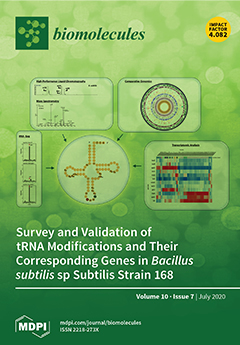Anisakis simplex third-stage larvae are the main source of hidden allergens in marine fish products. Some
Anisakis allergens are thermostable and, even highly processed, could cause hypersensitivity reactions. However,
Anisakis proteome has not been studied under autoclaving conditions of 121 °C for 60
[...] Read more.
Anisakis simplex third-stage larvae are the main source of hidden allergens in marine fish products. Some
Anisakis allergens are thermostable and, even highly processed, could cause hypersensitivity reactions. However,
Anisakis proteome has not been studied under autoclaving conditions of 121 °C for 60 min, which is an important process in the food industry. The aim of the study was the identification and characterization of allergens, potential allergens, and other proteins of heat-treated
A. simplex larvae. Liquid chromatography-tandem mass spectrometry (LC-MS/MS) was used to identify 470 proteins, including allergens—Ani s 1, Ani s 2, Ani s 3, Ani s 4, Ani s 5—and 13 potential allergens that were mainly homologs of
Anisakis spp.,
Ascaris spp., and Acari allergens. Ani s 2, Ani s 3, Ani s 5, and three possible allergens were found among the top 25 most abundant proteins. The computational analysis allowed us to detect allergen epitopes, assign protein families, and domains as well as to annotate the localization of proteins. The predicted 3D models of proteins revealed similarities between potential allergens and homologous allergens. Despite the partial degradation of heated
A. simplex antigens, their immunoreactivity with anti-
A. simplex IgG antibodies was confirmed using a Western blot. In conclusion, identified epitopes of allergenic peptides highlighted that the occurrence of
Anisakis proteins in thermally processed fish products could be a potential allergic hazard. Further studies are necessary to confirm the IgE immunoreactivity and thermostability of identified proteins.
Full article






